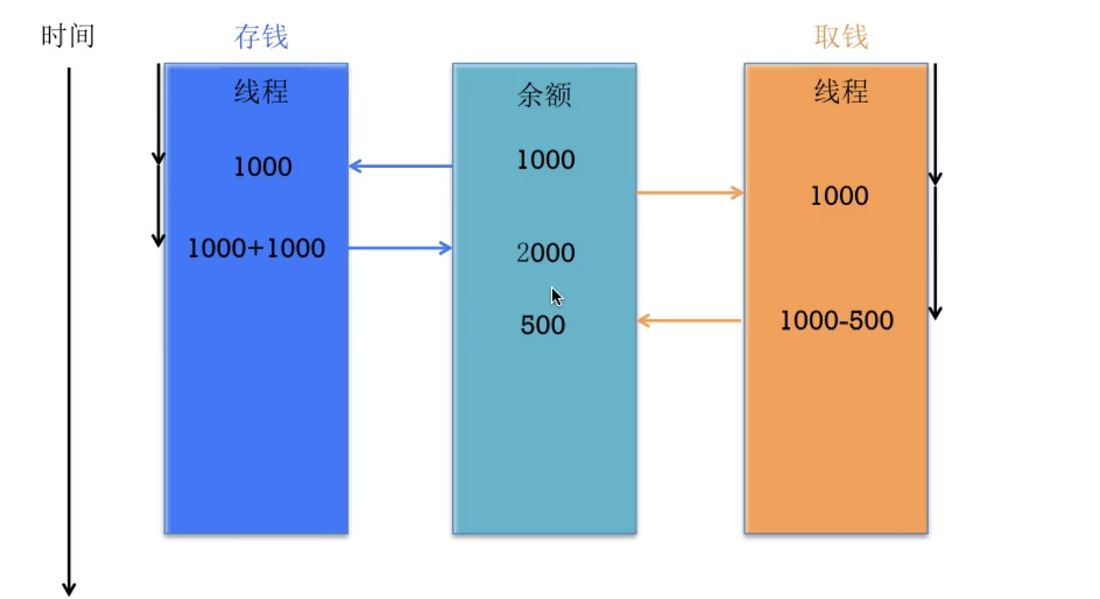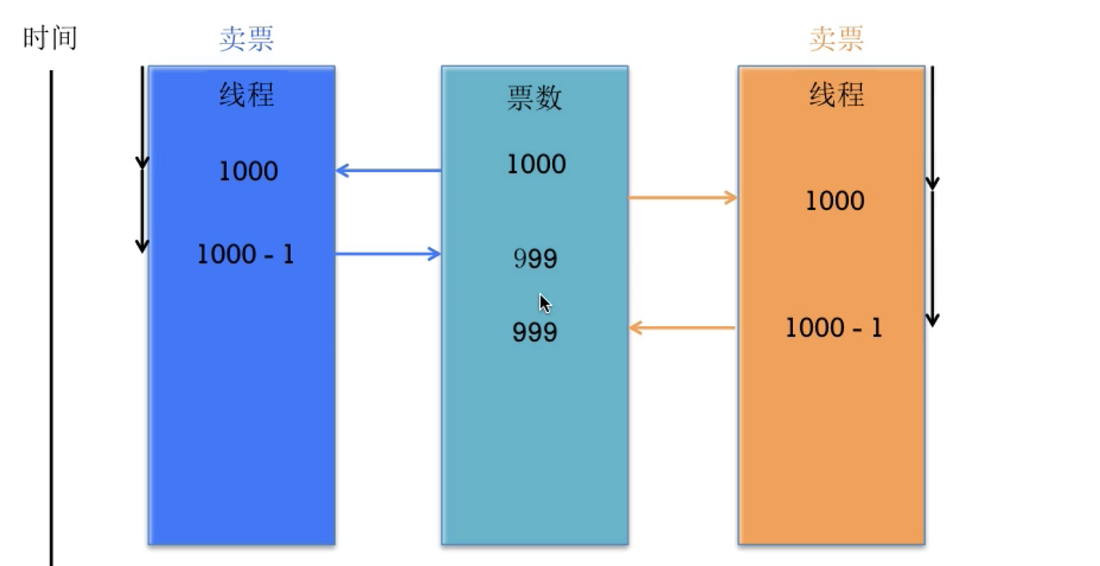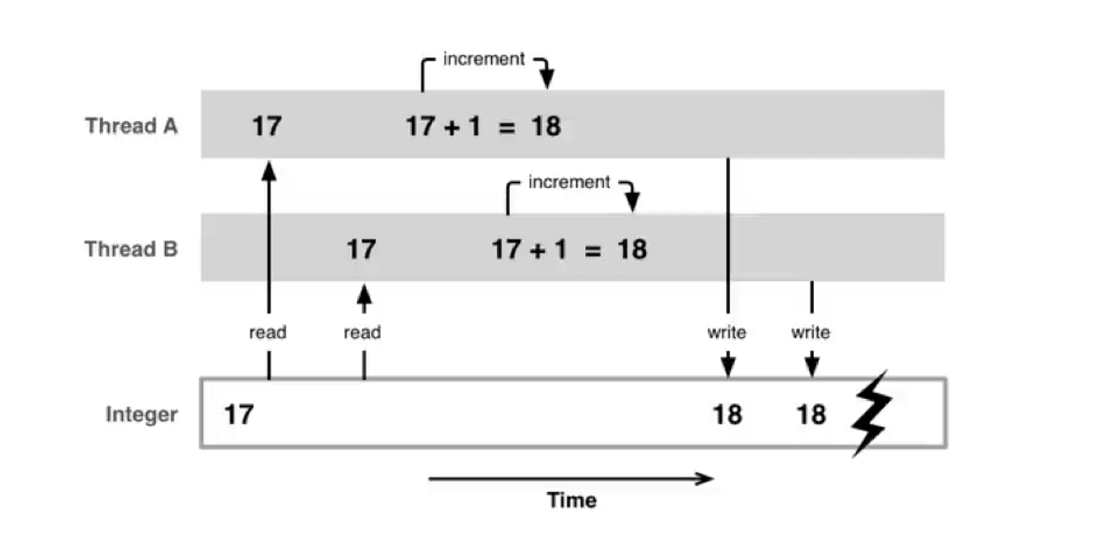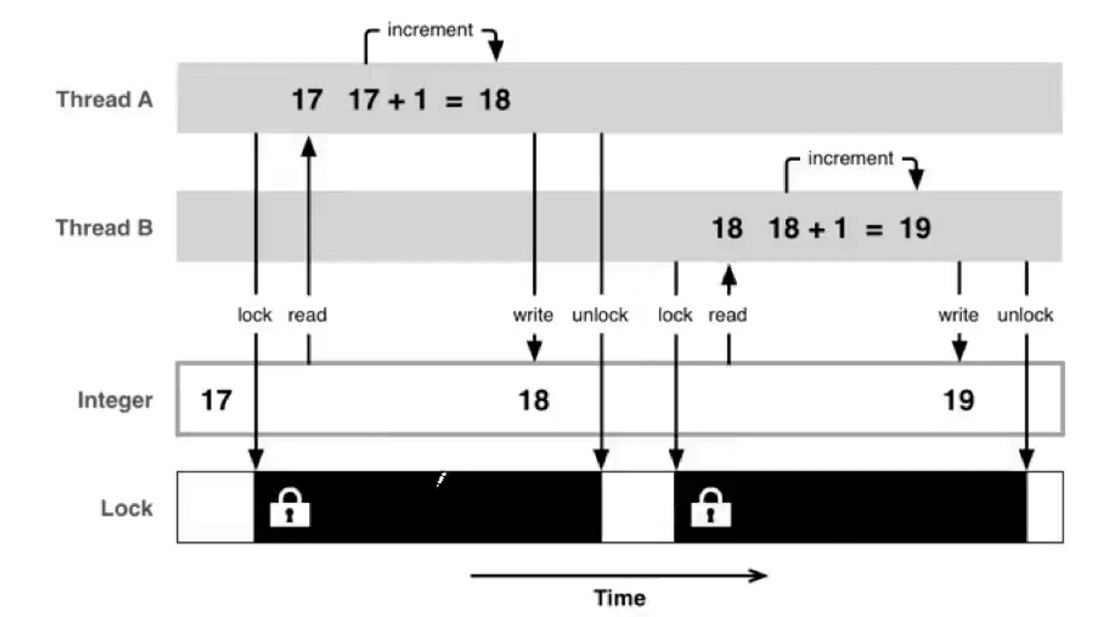IOS开发之——多线程-线程安全(3)
IOS开发之——多线程-线程安全(3)
一 多线程资源共享
- 1块资源可能被多个线程共享,也就是多个线程可能会访问同一块资源
- 比如多个线程访问同一个对象、同一个变量、同一个文件
- 当多个线程访问同一块资源时,很容易引发数据错乱和数据安全问题
二 安全隐患示例
2.1 示例一存钱取钱

2.2 卖票

三 多线程卖票
3.1 说明
- 程序启动后,开启1,2,3三个线程卖票
- 三个线程共卖100张票
3.2 代码
1 | #import "ViewController.h" |
3.3 现象
1 | 2022-02-20 23:10:18.593201+0800 05-线程安全问题[45790:535673] 3号窗口卖了一张票,剩余2张票 |
3.4 安全隐患分析

3.5 安全隐患解决(互斥锁)

四 互斥锁
4.1 互斥锁使用格式
1 | @synchronized(锁对象){//需要锁定的代码 |
4.2 互斥锁的优缺点
- 优点:能有效防止因多线程抢夺资源造成的数据安全问题
- 缺点:需要消耗大量的CPU资源
4.3 互斥锁的使用前提
多条线程抢夺同一块资源
4.4 相关专业术语:线程同步
- 线程同步的意思是:多条线程在同一条线上执行(按顺序地执行任务)
- 互斥锁:就是使用了线程同步技术
4.5 原子和非原子属性
- OC在定义属性时有nonatomic和atomic两种选择
- Atomic:线程安全,需要消耗大量的资源
- Nonatomic:非线程安全,适合内存小的移动设备
3.5 iOS开发的建议
- 所有属性都声明为nonatomic
- 尽量避免多线程抢夺同一块资源
- 尽量将加锁、资源抢夺的业务逻辑交给服务器端处理,减小移动客户端的压力
五 加锁后代码
1 | -(void)saleTicket |